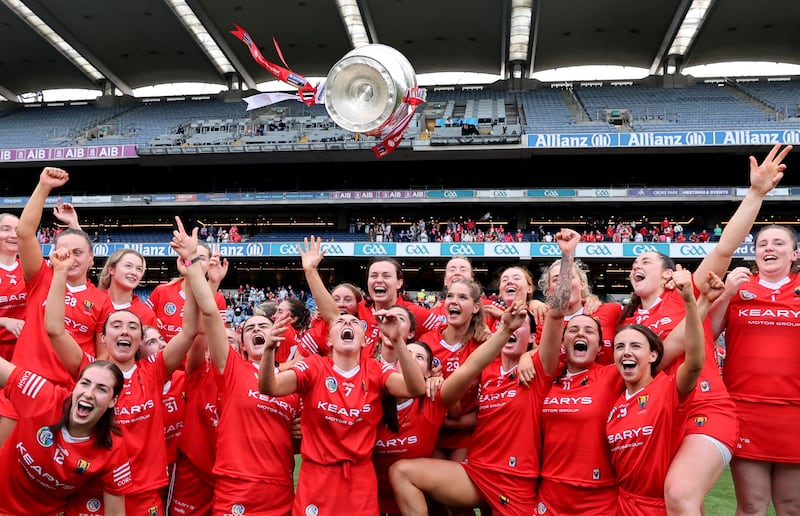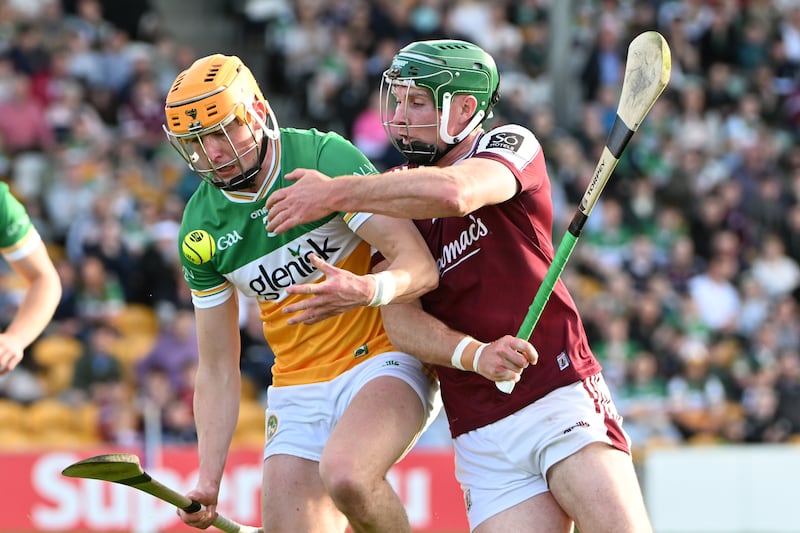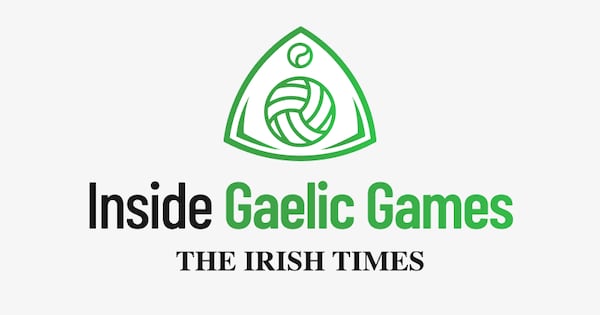The All-Ireland quarter-finals in this year’s women’s football championship had plenty of bite. Four games played across two days on live television at the start of July. Waterford travelled to Tuam, Dublin played Cork, while Kildare and Tipperary were back in the knock-out stages against Kerry and Meath.
In the end, none of the games were particularly closely contested – but you’d hardly have noticed, because they were up against the best-attended All-Ireland senior hurling semi-final weekend of all time. The Dublin and Cork hurlers attracted a sellout to Croke Park on the same day that three of the women’s football quarter-finals were played.
This was a classic case of the GAA cannibalising itself. There had been an example earlier in the summer that many people seemed eager to seize upon, when Dublin and Meath in men’s football was on GAA+ at the same time that RTÉ were showing Cork hammering Tipperary in the Munster hurling round-robin.
There was no way RTÉ could have known that Darragh McCarthy was going to get sent off before a sliotar had even been struck in the Páirc that day. Equally, who was to know this would be the day when Meath finally made a stand against Dublin in Leinster for the first time since 2010?
Ciarán Burke determined to continue Offaly hurling’s rise from the ashes
Donegal’s Ciarán Thompson sees no reason to ‘rip up the script’ ahead of new season
Son of his father: How Robbie Brennan’s dad inspired him to bring Meath back to victory
‘It felt like every football fan in the world saw the goal’: Ken Early on the late, late Troy show
There will always be a couple of games on at the same time during the GAA summer. That is the way of things. The fact that GAA+ existed meant that people were able to make the choice and switch over to the action in Portlaoise when it became increasingly clear that a shock was on the cards. That’s a mark in favour of GAA+, not a mark against it.
But there was nowhere else for the women’s football quarter-finals to go. They were always going to be up against the All-Ireland hurling semi-finals. The two camogie quarter-finals were also played that weekend, as part of a double-header with the two hurling semi-finals, and they were shown live on RTÉ as well.
For a spell in the 2010s, the promotion of women’s GAA seemingly boiled down to trying to getting as many people as possible in the door for All-Ireland final day. It’s a fairly crude metric, but when over 56,000 people showed up for the 2019 football final between Galway and Dublin, it could be said to have worked.

That crowd matched up very competitively with the top numbers attending women’s sports events globally that year, but the dial has moved somewhat even in the short space of time since then.
This year’s attendance was the biggest since 2019, and the TV audience saw a 16 per cent increase too. But we’ve just had the best-attended women’s Euros in history. Women’s soccer in this country has witnessed an explosion in interest, driven by the success of the Irish team, but existing outside of that too.
It’s one thing beating the women’s FA Cup final attendance in any given year, as the LGFA did in 2019, but Arsenal are packing out the Emirates Stadium all the time now. Supporters of women’s sport are making deeper connections than just the big day out.
The women’s football quarter-final between Dublin and Cork was at 1.15pm in Parnell Park, so there was time to go from that to Croker for the hurling semi-final on July 5th. Even so, it’s a lot to ask of fans to attend two games in two different venues a couple of hours apart. The player of the match in last Sunday’s women’s football final, Orlagh Nolan, told us this week that long before the end of that game in Parnell Park a month ago, she could see fans drifting off from their game towards Croker.
Competing for anyone’s attention in the shadow of the Cork hurlers would be challenging. They played in eight consecutive sell-outs this summer – which gives them a reasonable claim at being the best-supported sports team in the country. The Cork men’s footballers can’t compete. The women’s football team can’t either.
The split season is an issue for women’s GAA players too. But I believe there is a strong argument to clear August for the final stages of the camogie and women’s football championships. Then have the quarter-finals of the football and camogie on the same weekend after the men’s football final, to be followed by the camogie semi-finals, the football semi-finals and then the two finals.
That would give people the opportunity not just to see the games on TV, but to have a chance to look forward to them, to read previews and analyse the teams – to feel they’re joining in with a season, not checking in for a final which many people would watch without a frame of reference from that summer.
The major fly in the ointment is the AFLW – women’s Aussie rules – who have moved their season forward another two weeks this year, meaning it begins next Saturday week. But the day is fast approaching when players will have to make their minds up – Sinéad Goldrick, Aoibhín Cleary and Vikki Wall are heading to Australia this week, but how much longer can that continue? The LGFA would do well not to have their fixture schedule dictated to them by a professional league 15,000km away.
Jarlath Burns has expressed his desire to see the men’s finals pushed back a couple of weeks. That will inevitably have an impact on the women’s finals. And maybe there is a grand plan for the men’s and women’s fixture list that is being held back until integration is complete, in 2027. But in the meantime, August is there. The Camogie Association and the LGFA should take it.















